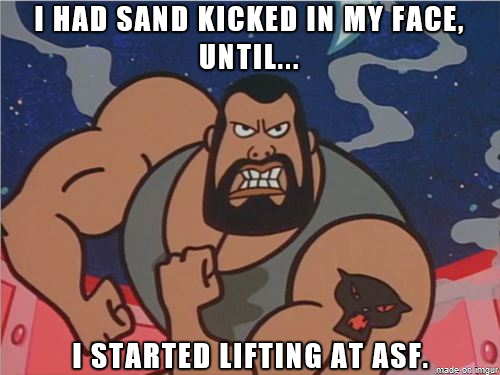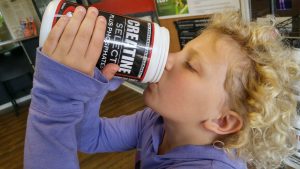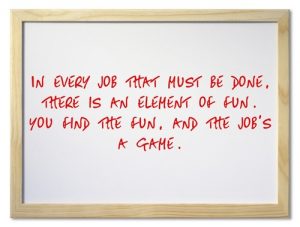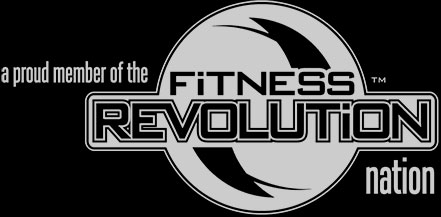Neil Platt ~
I am an avid reader and I have two must-read book recommendations: The Matheny Manifesto is an absolute must read for anyone involved with youth sports. It is written by St. Louis Cardinals’ coach, Mike Matheny.  Whether you are a parent, coach, or trainer it is an eye-opener that really hammers home the point of youth sports: IT IS ALL ABOUT THE KIDS! Another book that blew my mind was Legacy, a fantastic read that focuses on leadership. The central theme is the leadership structure within the New Zealand All Blacks program and how they have used this structure to dominate the rugby world. Need a knowledge bomb or two? Check out these two books.
Whether you are a parent, coach, or trainer it is an eye-opener that really hammers home the point of youth sports: IT IS ALL ABOUT THE KIDS! Another book that blew my mind was Legacy, a fantastic read that focuses on leadership. The central theme is the leadership structure within the New Zealand All Blacks program and how they have used this structure to dominate the rugby world. Need a knowledge bomb or two? Check out these two books.
Have you ever wondered “what is athleticism?” Yeah, me too. Here is a quick comparison of two of the NBA’s finest: Russell Westbrook and Steph Curry. Who is the better athlete? At first glance, Westbrook is by the far the better athlete. He’s faster, stronger and can jump through the roof. However, Westbrook’s career accomplishments fail to match what Curry has done. When you really dive down the rabbit-hole of what makes a great athlete, you have to consider aspects like reaction, focus, feel for the game, and coordination.
In-season training is a tool in the long-term development of an athlete that hardly anyone takes advantage of. Athletes of all ages spend countless amounts of blood, sweat, and tears, not to mention hundreds if not thousands of dollars, on their off-season training only to see diminished returns from their investment as they move through their season. Rather than waste all of this effort, add some structured training to your in-season routine. In-season training is generally done at a lower intensity with a shorter duration. The goal isn’t to make vast improvements during the season, it is to keep the improvements that were earned during the off-season.
Single-leg glute training hardly gets enough attention. Everyone is concerned with big squats and deadlifts, which are great, but not the whole picture. So much of our time is spent in a single leg position, yet we hardly train for it. Try adding some single leg hip extension, flexion, and abduction/adduction exercises to your training and see if you notice a difference, Stephen Curry certainly did.
The best diet ever is…the one that works best for you and the one you can follow for the long term. The diet industry is pretty comparable to the wi ld west where anyone can put anything out there and claim is the secret to success. Instead of chasing the next diet craze that promises six pack abs in 30 days, try sticking to a diet that is well balanced, consisting of healthy fats (nuts & oils), fruits & veggies, lean proteins (chicken, lean beef, fish, eggs), minimally processed carbohydrates, and the occasional sweet treat. Remove all of the complex myths that most diets use to confuse you and just focus on the basics!
ld west where anyone can put anything out there and claim is the secret to success. Instead of chasing the next diet craze that promises six pack abs in 30 days, try sticking to a diet that is well balanced, consisting of healthy fats (nuts & oils), fruits & veggies, lean proteins (chicken, lean beef, fish, eggs), minimally processed carbohydrates, and the occasional sweet treat. Remove all of the complex myths that most diets use to confuse you and just focus on the basics!
Brian Macdonald ~
Adding muscle is the best way to burn fat, and here’s why: Lifting weights allows you to sustain a higher metabolism after your training has finished, unlike never ending cardio circuits which will spike your metabolism while you are doing it, but will return to normal shortly after training has ceased. It has been estimated that metabolic rate can be elevated for as long as 39 hours after an intense bout of resistance training, so you are burning calories at a higher rate for a longer rate. Also, more lean muscle = higher metabolic rate. Think of it as the more lean muscle you have, the hotter your “metabolic fire” will burn. The cardio/starvation approach is not going to be the best means to achieving the goal of a better physique. Reasonable amounts of cardio/conditioning are perfectly healthy and highly encouraged for cardiovascular health, but if a true change in your overall physique is the set goal, consider a sound resistance training program paired with equally sound nutrition containing sufficient quantities of macronutrients to support muscle growth is the way to go.
Peri-workout nutrition is a hot topic in sport nutrition circles right now. Consuming food prior to exercising will help sustain energy, prevent the breakdown of muscle mass, boost performance, and aid in the recovery process. Some sort of mixed meal, containing protein and some sort of carbohydrate, a few hours prior to exercise will go a long way in achieving these goals. Protein will help maintain and potentially increase muscle size, help to reduce the severity of muscle damage, and increase your amino acid profile within the bloodstream which aids in your body’s muscle building ability. Carbohydrates can simply be viewed as fuel for your workout as well as stabilizing blood sugar levels. They also help to preserve muscle and liver glycogen which will help prevent the breakdown of muscle. Lastly, carbs will help boost insulin levels which will help in protein synthesis, also a reason to eat a mixed meal including these two macros. Think of something such as fruit, oats, or rice for your carb content. Hopefully this will inspire you to consider the importance of fueling your body and make a difference in your workouts.
Another controversial topic in health and wellness is detoxing or cleanses. When it comes down to it, our body is extremely efficient at cleansing itself, that is assuming that we treat it right. If we simply boost our natural detoxification systems within our bodies and not abuse them, we are perfectly capable of clearing unwanted toxins and chemicals, free of charge. Our liver, kidneys and lymphatic system do a tremendous job of clearing out the “garbage” from our multiple cellular processes. [For more info, please check out this fantastic article from the incredibly knowledgeable team at Precision Nutrition on whether detox diets are actually good for you.]
Brigit Reder ~
Creatine… Just for the guys right? Wrong. Creatine is an organic acid that every human produces. Simply put, it helps supply energy to all cells in the body, especially  muscle cells. Its not specific to only male muscle cells and incompatible with those of females. The benefits of taking creatine regularly are worth considering when trying to add that next level to your training, potentially put on some extra lean muscle mass, enhance recovery, and exert one more powerful sprint rep. Again, it does not matter male or female… if you’re training goals are not being met with current balanced nutrition, recovery, and exercise protocol, consider putting some thought into adding Creatine as part of your routine.
muscle cells. Its not specific to only male muscle cells and incompatible with those of females. The benefits of taking creatine regularly are worth considering when trying to add that next level to your training, potentially put on some extra lean muscle mass, enhance recovery, and exert one more powerful sprint rep. Again, it does not matter male or female… if you’re training goals are not being met with current balanced nutrition, recovery, and exercise protocol, consider putting some thought into adding Creatine as part of your routine.
GPS in sports. Something not spoken of frequently in the media or on your hour of SportsCenter every morning. However, it’s an integral part in professional sporting arenas and even most top college programs. Especially within soccer, rugby, and even basketball. GPS and heart-rate monitor use, in combination, during games and training help strength and conditioning coaches monitor athlete’s output and therefore aid in recovery programming. GPS tracks max output sprints, total mileage covered, where movement is taking place on the field or court, quantifying amounts of acceleration and deceleration within a game, and using this information to analyze the physical demands of athletes in their positions and sports. Incredibly useful tool, but underused based on high cost.
Leadership tends to be a term thrown around among coaches, teachers, and businesses alike. Everyone seems to have their own definition of what a leader is… naturally capable of captivating an audience and influencing, or the opposite, skills and attributes that were learned over time through study of literature or interacting with groups of people. No right or wrong, simply just different styles of leadership. Ultimately leadership is a powerful tool. The ability to lead and organize a group of people to share a common belief or goal, and then find a way to identify and solve problems in an ongoing journey. If you’re identified as leader in your workplace, sport, school, whatever arena… are you positively influencing and leading those around you towards the greater good or goal?
Tony Poggiali ~
The time I spend with my daughter and all the kids at ASF is such a two way street; I am sure that I learn more from them than they learn for me.
Our coaches are always behind the scenes getting better so you can better. There is a stigma that all we do is lift weights, wear t-shirts and shorts (which we do), and just show up to write workouts and administer a bunch of drills. We take every bit as much pride in mastering our craft as any other professional. Ask any of us how much time is spent on continuing education and you may be surprised how serious we take our vocation. There is SO much that we know, but even more that we do NOT know. It makes the path to mastery extremely fun.
Short of non-stop traveling, I am convinced that the world can be found in books.
Are smart phones really making us smarter? It feels like they are making us dumber.
The training industry gap is widening. The good coaches are becoming great, the great coaches are becoming elite, the pioneers, and everyone else is poor or average and will eventually have no more business or leave the industry. Consumers are getting smarter, more skeptical and becoming informed. If you are not getting better, by default, you are getting worse.
I love to make mistakes. It has taken me a long time to get over the word failure. I am messing things up pretty much every week but have changed my mindset to accept that mistakes are the greatest teachers.
After 28 years of training/coaching, I am still having fun. When it ceases to be fun, I am done.
I think the next wave of research (actually, it is already here) will focus on our relationship with the billions of critters that live inside of us, known as the microbiome. They may be responsible for….everything that goes wrong (and right) within us. Stay tuned.

